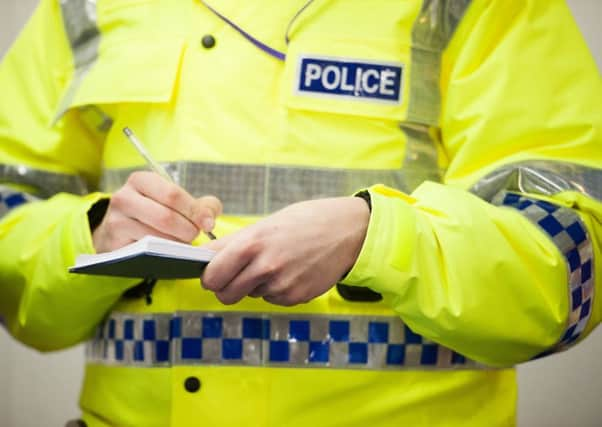Chris Marshall: Selling the future of Scottish policing will be no easy task


The year is 2026 and in this Philip K Dick-inspired dystopia all officers have body-worn cameras which allow them to instantly upload evidence to a central computer.
A case study follows the day-to-day routine of fictional officer PC Sophie Robertson.
Advertisement
Hide AdAdvertisement
Hide AdResponding to an assault outside a pub, she receives the victim’s medical notes via e-mail on her mobile device before sending images of the man’s injuries from her camera.
She accesses council CCTV using an app, downloading the footage and checking it against facial recognition software. An alert is sent to the Police National Computer and the attacker is quickly apprehended.
Despite this apparent reliance on technology, PC Robertson is nevertheless a traditional bobby on the beat who is called to the incident while out on foot patrol.
At the launch of the strategy on Monday, it was confirmed that police officer numbers will drop by around 400 by late 2020.
Chief Constable Phil Gormley was at pains to point out that officers would not become less visible on Scotland’s streets over the next decade or so.
But the ten-year plan does point to a future where Police Scotland will have to invest heavily in technology and that will have to be paid for somehow.
As well as body-worn cameras, something Mr Gormley predecessor’s ruled out due to cost, the strategy suggests members of the public will be able to report crime and upload evidence to an “online self-service portal” using their smartphone.
Officers could also record digital fingerprints and DNA evidence at crime scenes and some victims of crime will be seen via video calls rather than face-to-face.
Advertisement
Hide AdAdvertisement
Hide AdAll this from a police force which last year scrapped a glitch-ridden IT system which had been years in development.
That is not to say Police Scotland shouldn’t try these things – it would be perverse if it did not attempt to harness modern technology.
But with a projected funding gap of £200 million by 2020-21, it remains unclear how it will be funded.
The fear is that at least some of it could be paid for by reducing officer numbers.
The publication of the strategy gave official confirmation to the long-held suspicion that a target on officer numbers which has been in place since 2007 has now been scrapped.
In separate interviews with The Scotsman last year, both Mr Gormley and Andrew Flanagan, chairman of the Scottish Police Authority, suggested officer numbers would become less of a fixation in the coming years.
The chief constable said money could be better spent on new technology than employing more officers, while Mr Flanagan called for more graduates working in “darkened rooms” to tackle the growing threat of cyber-crime.
Those comments seem to have hinted at what was to come in the ten-year strategy, which has now gone out for consultation.
Advertisement
Hide AdAdvertisement
Hide AdThe public may well support Police Scotland in its attempts to modernise and meet the challenge of emerging crime threats.
But if the price to pay is fewer officers on our streets, that could prove to be an altogether more difficult sell.